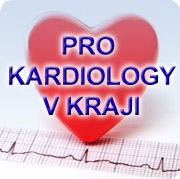Endoscopic Harvesting of Vascular Grafts
Endoscopic Harvesting of Vascular Grafts
Many patients are surprised when they learn that the bypass operation (bypass = bridging over) may mean two surgical procedures:
- Primarily, the bypass surgery includes the use of a healthy vessel for “passing by” the impaired or blocked artery on the heart.
- The second procedure is the harvesting of a healthy vessel, usually the “vena saphena magna” from the patient’s lower limb which is consequently used for the creation of the bypass.
What Is a Classic Harvesting of Vascular Grafts?
As mentioned before, the surgeon must gain a healthy vessel from another part of your body before the creation of bypasses. It requires an independent surgery which is fluently continued by the heart operation itself. Vascular grafts which may be used by the surgeon:
- Vena saphena magna, the vein on the inner side of a lower limb going from the ankle to the groin.
- Radial artery, the vessel on the forearm going from the cubital fossa to the wrist.
- Inner breast artery which is in the chest
The “saphena magna” is used in cardiac surgery very often. A classic harvesting of this vessel sometimes means a long cut from the ankle to the groin. The harvested vessel is consequently used as a graft the surgeons sew on the heart to bypass the blocked heart artery.
What Is Endoscopic Harvesting of Vascular Grafts?
Present innovations in technologies make it possible to carry out this intervention by a new less invasive method called “Endoscopic Vessel Harvesting” EVH).
This procedure enables a surgeon to make one short cut (approximately 25mm long) on the leg of the operated person instead of a long cut, which means lower damage to tissues and muscles during the vessel harvesting and decreasing the postoperative complications associated with classic harvesting (defects of the wound healing, pain).
How Is the Endoscopic Vessel Harvesting Performed?
An endoscope, a special device allowing a view to cavities, is connected to a digital video camera and inserted through a small hole to a leg (hand) of the operated person. The endoscope enables the surgeon to see the vessel in the leg (hand) and to harvest it with minimum damage and burden to the limb.
What Are the Advantages of the Endoscopic Vessel Harvesting for a Patient?
In its result, this new method damages tissues and muscles less, and therefore, it can decrease the operative burden of the patient, it decreases the occurrence of infections and defects of the wound healing. In other words:
- You should experience less pain in the wound,
- It results in a better cosmetic effect,
- You will be able to better concentrate on your cardiologic rehabilitation
The endoscopic approach can be used in most cases, however, every patient is unique and your surgical team will choose the most suitable method for you.
It is necessary to realize that the goal of the coronary surgery is to increase the blood flow in the heart arteries. A higher blood flow in coronary arteries may:
- eliminate or decrease the occurrence of angina pectoris (the pain or tightness in the chest)
- improve the function of the heart muscle
- decrease the risk of heart attack
